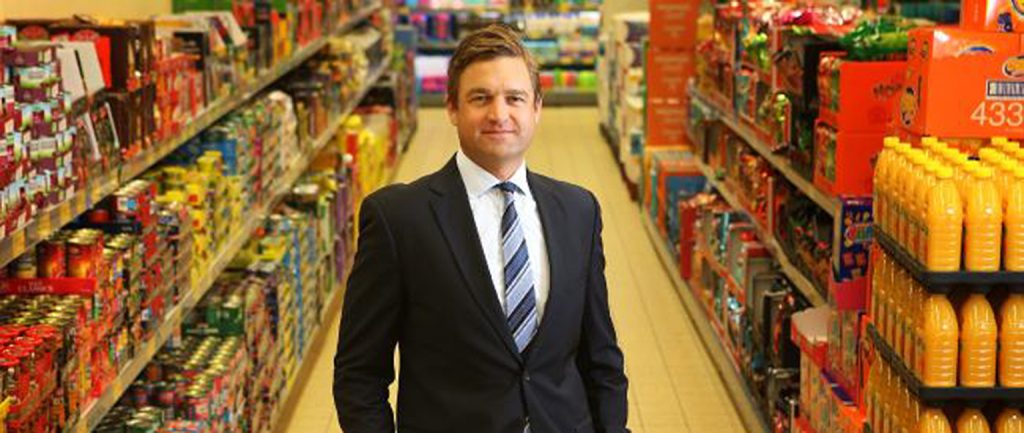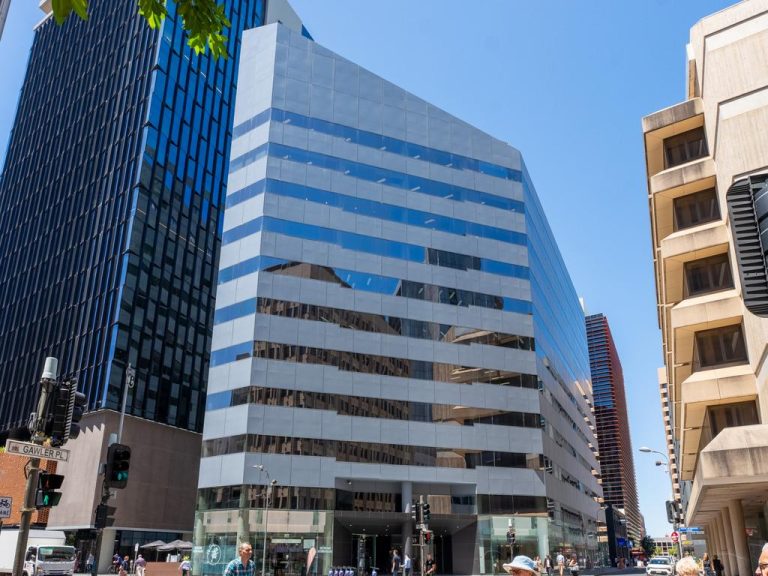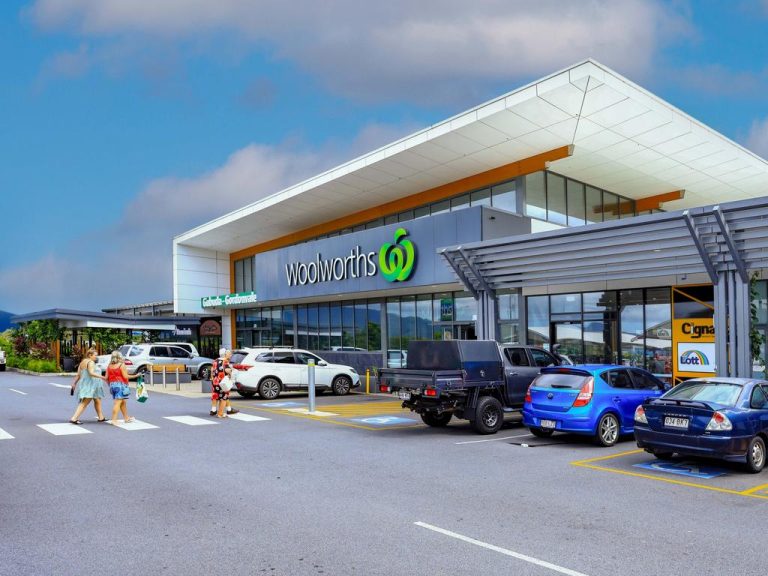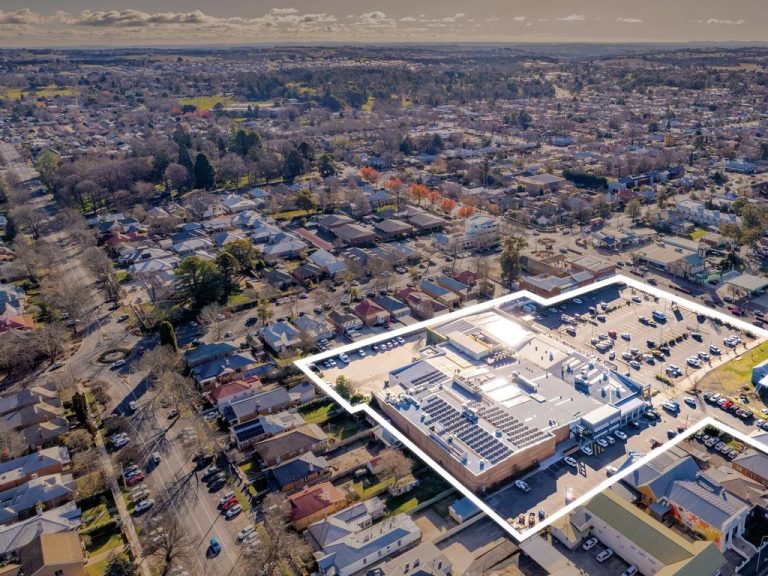Aldi throws down gauntlet to Woolies, Coles

The local boss of discount supermarket Aldi has mixed news for Australia’s leading supermarkets Woolworths and Coles, as well as the independent grocery stores, which are collectively losing about $6 billion a year in sales to the fast-growing German chain.
Chief executive Tom Daunt, who oversees more than 440 stores across the east coast, South Australia and Western Australia, is keen to assure the supermarket heavyweights that even a global retail juggernaut such as Aldi “really is not here to conquer the world” and will eventually hit a ceiling for its ambitious growth trajectory.
The bad news is Aldi believes there is still plenty of growth in the pipeline as its present market share of just under 10% climbs to 15% within a few years, potentially stripping another $4 billion in annual sales from the already depleted pockets of Woolworths, Coles and the independents.
Yields shrink: Retail property enjoys $1.3bn surge
And Aldi will achieve this by pouring $700 million into rolling out at least 120 stores in South Australia and Western Australia.
It will also undertake the biggest refurbishment program since arriving in Australia 15 years ago as its 400 east coast stores are revitalised to improve their fresh fruit, vegetable, bakery and meat categories — long an Achilles’ heel for the retailer.
I think there could be another 100 stores, something like that, that may come out in the eastern seaboard over the years to come
Daunt also warns that if Woolworths and Coles — now engaged in a bitter and costly price war — think they can catch Aldi to compete on price they will fail.
Aldi is already lowering its prices and the retailer pledges to maintain around a 25% price discount to the full-line supermarket heavyweights.
The message is clear: Aldi is up for the fight, and its shoppers “are coming from everywhere”.
“The market definitely is more competitive than it has been,’’ Daunt tells The Australian in a rare interview.
“And with the Woolworths turnaround they have obviously been reinvesting a lot in prices to try to close the price gap with their major competitor, Coles.
“Coles at the same time have been pursuing a long-held strategy, which is to reinvest some of their cost gains back into retail prices, so nothing new there.
“But the thing that hasn’t changed at all is that our customers trust us to have the lowest prices in Australia.

Aldi is expected to begin refurbishing its existing stores.
“When somebody shops in an Aldi store they are not wondering about the price, that’s one of the most important aspects of our business model.
“Our prices are always the lowest, so we have observed the market getting a little sharper in prices … at the same time as our competitors have been lowering prices, we have as well.”
The strategy has served Aldi well to date, with the latest figures to be released by the Tax Office showing Aldi’s sales jumped $1 billion to $5.8 billion for calendar 2014 as pre-tax earnings hit $238.5 million.
Six years ago, Aldi’s sales were only $3.14 billion.
Aldi is eager to push home its advantage, stepping up pressure on Woolworths and Coles at a time when both public companies are feeling the pressure to lower prices but also trying to keep shareholders happy by protecting profit margins.
I would expect in the years to come that (east coast) growth will slow down a little bit as our store network increases
Daunt believes Aldi can add another 50% to its market share in the next few years, and it is likely most of that growth will come at the expense of Woolworths and Coles.
“It is fairly inevitable that we will grab a little bit more share and maybe we will grow to 14 or 15% (of the Australian market) at the end of the day.
“If you ask where is that coming from, it’s really from all players, and increasingly it’s very often people are changing from full-line supermarkets, so that’s obviously both Coles and Woolies.”
While Aldi now has 400 stores across Queensland, NSW and Victoria, Daunt argues there is still capacity to roll out as many as 25 a year in the short term, but that growth will ultimately slow.
“I would expect in the years to come that (east coast) growth will slow down a little bit as our store network increases. I know our competitors think differently, but we are really not here to conquer the world, and we just want a sustainable, profitable, solid business that enables us to deliver ongoing value to our customers.
“So I think there could be another 100 stores, something like that, that may come out in the eastern seaboard over the years to come. But I would expect our growth would start to taper off slightly after that.’’
Daunt concedes since opening its doors in Australia in 2001 Aldi’s “fresh” offering has been weak, especially compared with Woolworths and Coles, which pour hundreds of millions of dollars into that category, but that will now change. After trialling a new fresh format in a handful of pilot stores, Aldi will refurbish its entire store network to showcase its fresh food so it can compete with the big supermarket chains.
It will refurbish between 50 and 100 stores next year.
“We are really excited about it because we are getting a very positive reaction from our customers … it’s a vastly better shopping experience than our current store design and includes extending the chillers, which enables us to offer a much larger range of fresh meat, ready meals, that sort of thing.
“And, importantly, extending the areas for fruit and vegetables.
“Our stores will still be relatively small, simple and efficient, but we want to offer our customers a better shopping experience, particularly around fresh categories, because that’s where the consumer is demanding more of us.’’
This article originally appeared on www.theaustralian.com.au/property.







